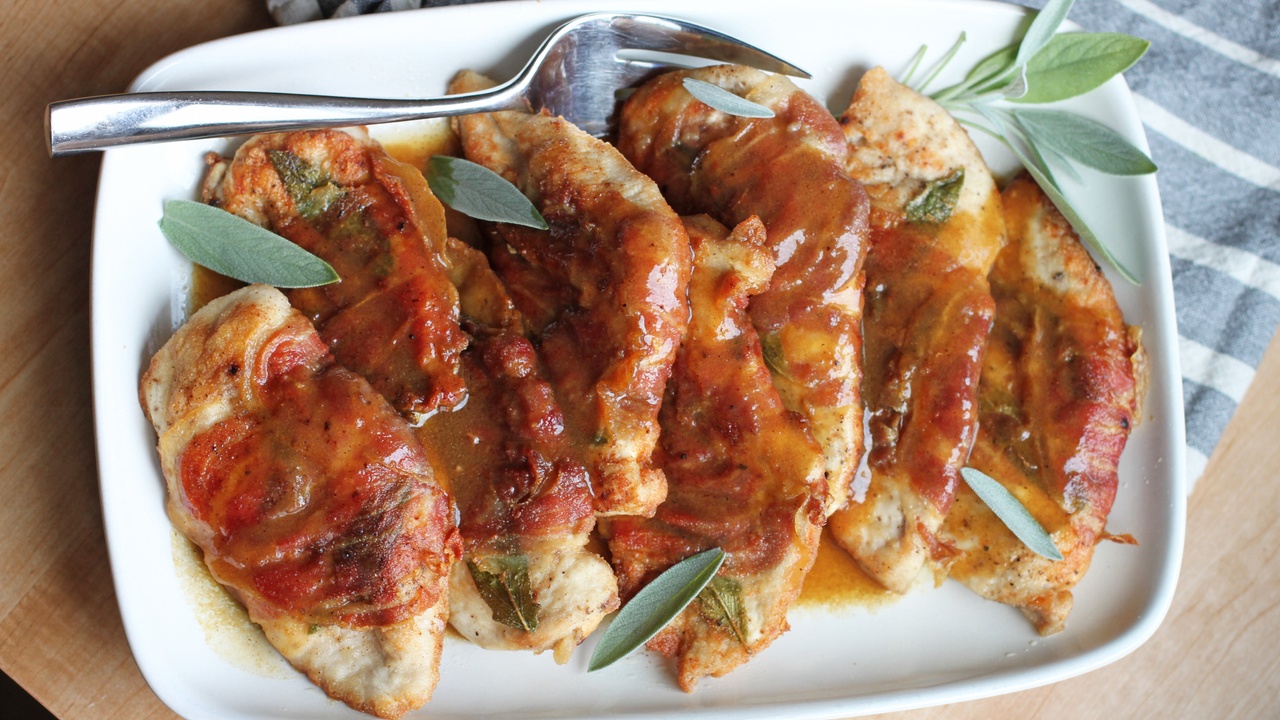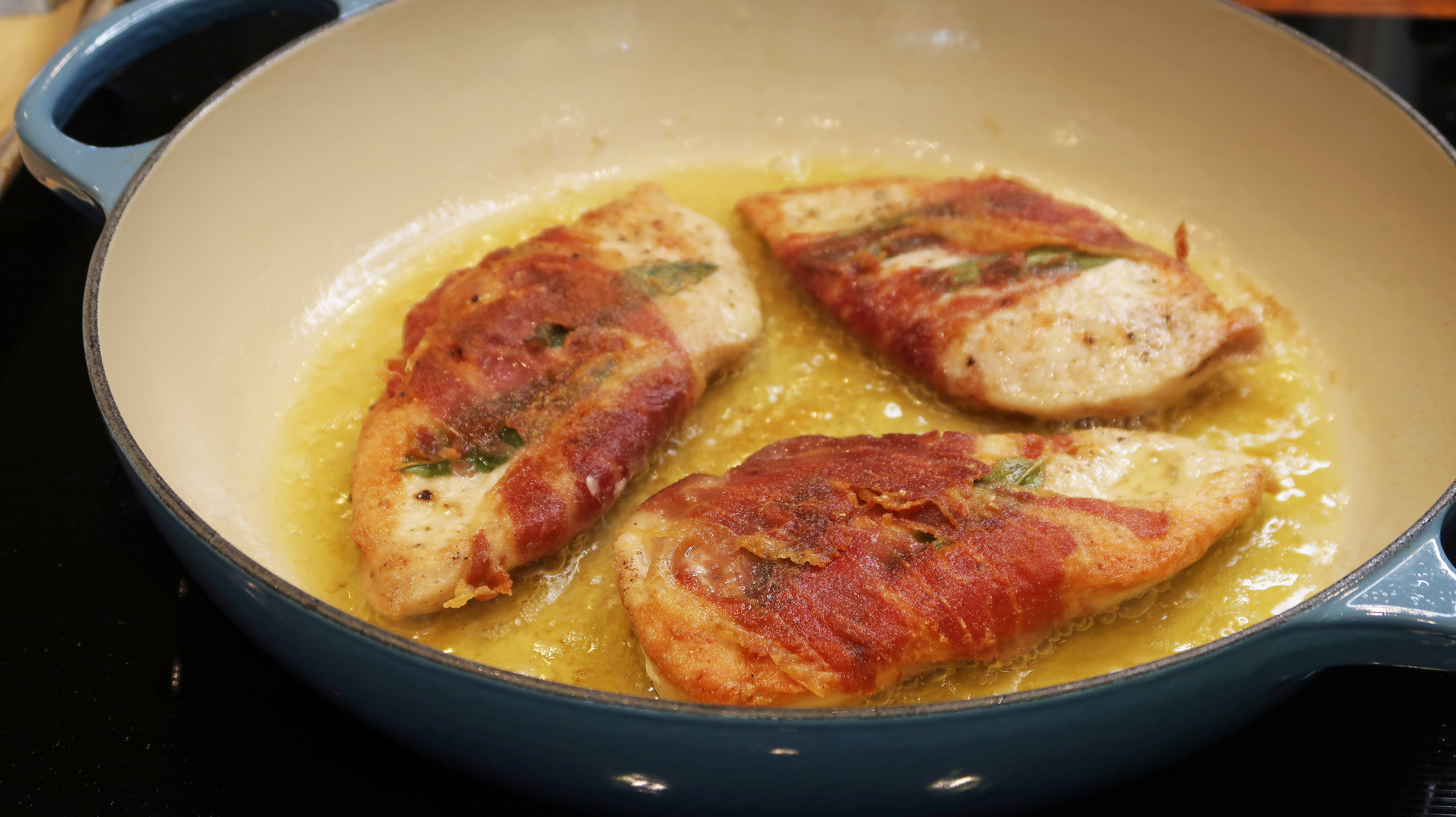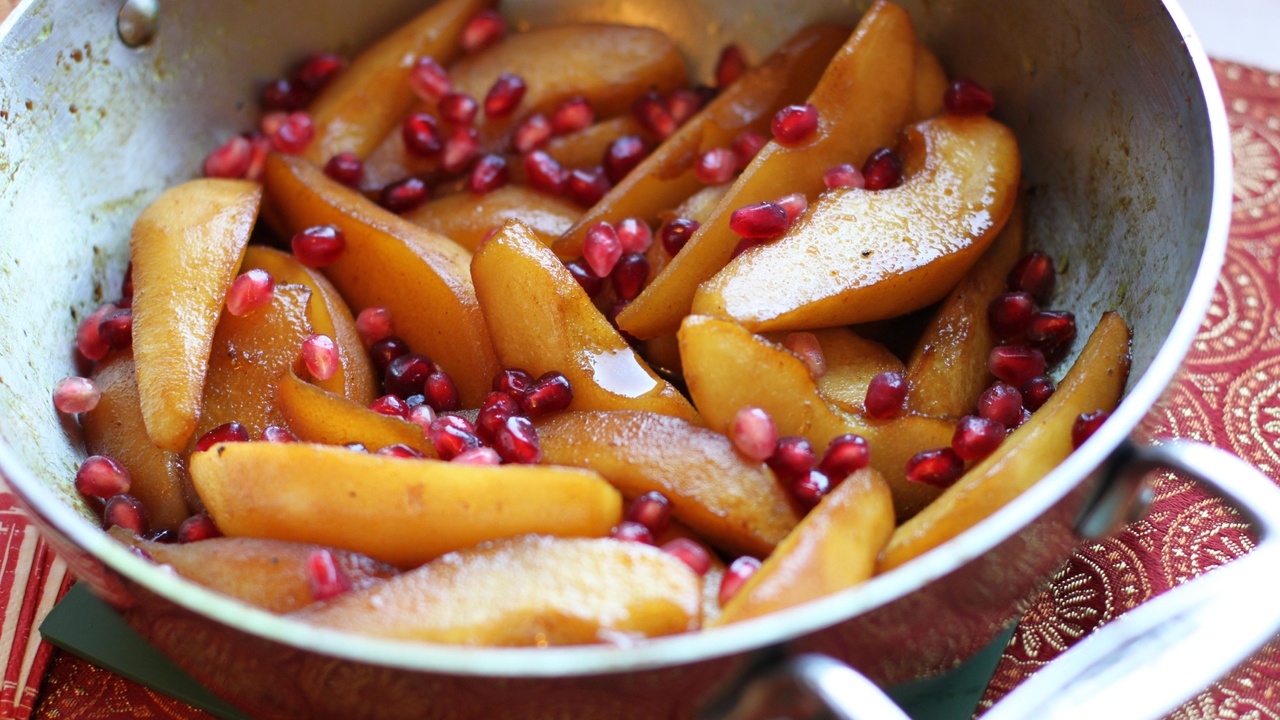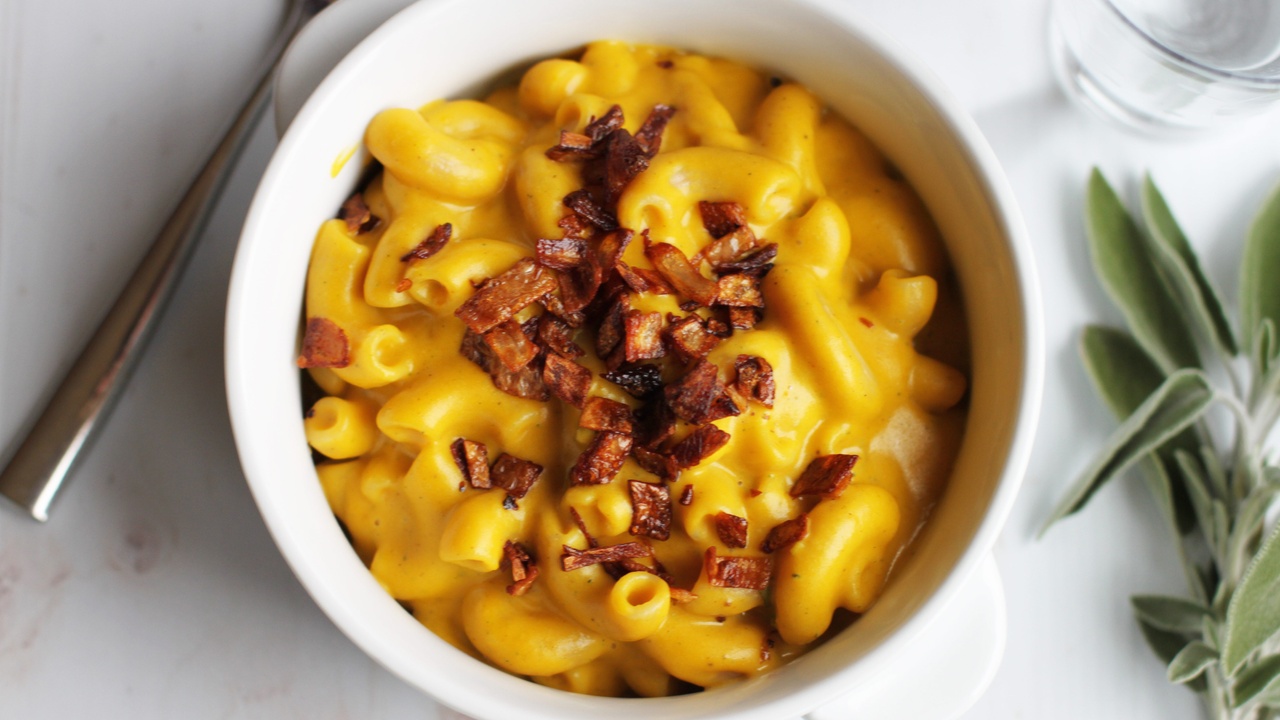Chicken Saltimbocca (GF, DF, Paleo, AIP-friendly)

Chicken Saltimbocca is a classic Italian dish where chicken cutlets are wrapped in fresh sage and prosciutto, then browned in a skillet, and topped with a rich and lemony pan sauce. Saltimbocca can also be made with pork or veal cutlets, but chicken is so easy to source and works especially well here.
We make this version all the time at home and it's always a showstopper. In fact, the Italian translation of "Saltimbocca," is, "It jumps in the mouth!"
Watching the way my family scarfs this down, I would say that's pretty accurate! LOL
But the best part about this recipe for us Thyroid Thrivers is that it is gluten-free, dairy-free, Paleo, and AIP-friendly. I'm so excited to cook it for you in this episode of Thyroid-healthy Bites!
Full disclosure: Some of the links in this post may be affiliate links. As an Amazon Associate, I earn from qualifying purchases. Purchasing a product using one of these links will support my work at no additional cost to you. Please know that I only recommend products I wholeheartedly stand by.
Disclaimer: This information is for educational and inspirational purposes only. Always consult with your doctor or other qualified healthcare providers before making changes to your diet, health care, or exercise regimen.
Making Saltimbocca Gluten-free
The original Saltimbocca recipe given to me by one of my cooking buddies featured wheat flour, which not only put a nice crisp crust on the chicken cutlets but also served to thicken the luscious pan sauce. My son, who requests this meal for his birthday dinner, calls the pan sauce, "Lemon Gravy," which is a fairly accurate description.
Now, there are a lot of gluten and grain-free flour alternatives out there to choose from. Unfortunately, most of them are too grainy, flavorful, prone to scorching, or devoid of "thickening power" to work well here.
For a while, we made Chicken Saltimbocca without flour, which was okay, but it just wasn't the same.
It wasn't until I started using cassava flour that I knew I had finally found the perfect gluten-free replacement for this recipe.
What Is Cassava and Is It Okay for Hypothyroidism?
Cassava, sometimes called yuca, is a starchy root vegetable native to South America. It has a mild, slightly nutty flavor, and can be dried and ground into a very, very fine-textured flour. In fact, when you open the bag, watch out because you might get a little white cloud of super-fine cassava flour in your face if you're not careful!
Cassava also happens to be gluten-free, lectin-free, low-FODMAP, Paleo, and AIP-friendly! My paleo, autoimmune, and AIP recipe writing buddies LOVE cassava, but it does have one caveat...
It would be absolutely perfect for Thyroid Thrivers, if not for one thing: Cassava is goitrogenic, meaning that it can inhibit thyroid function. But don't let that scare you off! Like so many other nutritious goitrogenic foods (like broccoli, kale, or sweet potatoes just to name a few) most experts feel cassava is not an issue unless you're consuming it in excessive amounts or as a dietary staple. Using it for the occasional recipe like this one doesn't fall into that category.
Personally, I go through maybe one bag of cassava flour a year, so I don't worry about it, but I do pay attention to how much cassava I'm eating on the whole, including cassava tortillas and cassava tortilla chips. Like all goitrogenic foods, I simply try not to overdo it. But like my other autoimmune recipe buddies, I too treasure cassava as a gluten-free solution to things like holiday gravy, roux-thickened soups or stews, or this succulent Saltimbocca. It's all about balance.
My 2 favorite brands of cassava flour:
Chef's Tips:
- Cassava flour works perfectly for things like thickening gravies or stews, for dredging and frying, or even for making a roux. It also works perfectly for the technique used in this Saltimbocca recipe of browning meat or poultry in a skillet with a nice light crust and then deglazing the browned bits from the pan with liquid to make a pan sauce.
- When cooking with wine, rest assured that almost all the alcohol cooks off. If you're on a strict healing diet like elimination-phase AIP, you can omit it and replace with a little extra lemon juice. To learn more, read my post on, "Cooking with Wine the Thyroid-healthy Way."
- To make this recipe AIP: Omit the pepper, replace the ghee with additional extra virgin olive oil, and replace the 3 tablespoons of white wine with 1 additional tablespoon of lemon juice. These instructions are included in the printable recipe (below). NOTE: Ghee and black pepper are AIP Reintroduction Phase 1, and wine is Reintroduction Phase 2.

What Is Prosciutto di Parma?
Prosciutto is a salt-cured pork product, made by rubbing a hind leg quarter of pork with salt and letting it dry age for months or even years. While there are many brands of prosciutto available, and many of them decent, none really compare to genuine Prosciutto di Parma, from Parma, Italy.
Yes, that's the same region that produces true, raw milk, Parmigiano-Reggiano cheese. In fact, the pigs in Parma are fed the whey from the cheesemaking process, giving true Prosciutto di Parma its unmistakable sweet and nutty flavor.
It's astounding, really, that such complex flavor comes from just 2 ingredients: pork and premium Italian sea salt. And the processing? Fresh mountain air, and time. That's it.
Finally, after all that fresh air and time, it just needs to be shipped off to your local grocer and sliced so thin you can read the newspaper through it (I'm only slightly kidding about that).
Sure, you can substitute another brand of prosciutto in this recipe, but be sure to check the ingredients for things you may be avoiding like nitrates, nightshade spices, or other preservatives.
You can often find Prosciutto di Parma at the deli counter, and also at Costco.
Thyroid-healthy Highlights:
- Chicken is a very good source of selenium, which helps to regulate the production of thyroid hormone, convert T4 to T3, and protect the thyroid from stress.
- A 3-ounce serving of chicken provides 84% RDI of the essential amino acid Tyrosine, which the thyroid gland combines with iodine to produce thyroid hormone.
- Extra Virgin Olive Oil is considered one of the world’s healthiest fats. Some of its many scientifically-proven health benefits include anti-inflammatory properties, high antioxidants, and reduced risk of cancer, Alzheimer’s, and heart disease.
- Lemons are a very good source of vitamin C, with one ounce providing 36% DV. A study recently shared in the Journal of Clinical Endocrinology and Metabolism stated, “In patients with hypothyroidism and gastrointestinal pathology, vitamin C improves the abnormalities in serum free T4, T3, and TSH concentrations.”
- Bone broth is one of the most highly recommended foods for anyone suffering from an autoimmune disease. The collagen and glycine can help repair cell damage in the intestinal tract. It also supports hair, skin, and nail health, as well as our body's detox pathways.
Show Links:
- Subscribe on iTunes
- Follow on Spotify
- Subscribe on YouTube
- Subscribe on Google Podcasts
- Listen on the podcast page
- Download my FREE guide to Healthy Fats & Oils
Happy cooking, happy thriving, and enjoy the recipe (below)!

P.S. Need more thyroid-friendly recipe inspiration? I’ve got you covered. My Thyroid-friendly Everyday eCookbook features over 50 quick and easy, thyroid-friendly recipes your whole family will love. To take a peek at what’s inside, CLICK HERE.
Suggested Accompaniments:
- Zucchini Pappardelle with Mushrooms (GF, DF, Paleo, AIP)
- Mashed Winter Squash 3 Ways (GF, DF, Paleo, AIP)
- Toasted Quinoa (GF, DF)
- Jovial Brown Rice Pasta (GF, DF)
- Spaghetti Squash (GF, DF, Paleo, AIP)
Subscribe to my free newsletter for fresh recipes & lifestyle tips, delivered weekly, and receive a free gift!
By submitting this form, you agree to receive ongoing updates from Hypothyroid Chef











